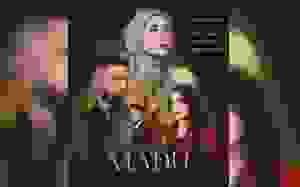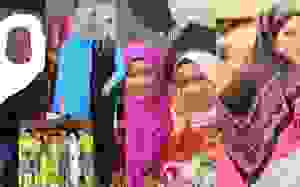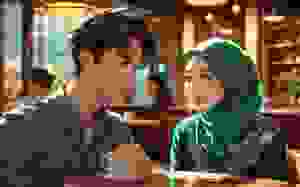Where Do Mooncakes Come From Origin Myths And Folktales From Fantastical To Historical
The golden serenade mooncake collection from China Tang, a Chinese restaurant in Hong Kong. -- Photo: China Tang / SCMP
EAST ASIA/SOUTH EAST ASIA (South China Morning Post): Every year during the Mid-Autumn Festival, many Hongkongers bite into golden-yolked mooncakes without ever thinking about the fact that they are tasting Chinese history, one where myth, revolution and culinary tradition are baked into every piece.
The humble mooncake has origins far older than Hong Kong itself, with tales that span everything from the beginnings of an empire to the fantastical birth of a moon goddess.
The essence of the mooncake is found in its filling: sweet, velvety lotus seed paste enveloped by thin pastry skin. Its defining luxury is the salted duck egg yolk, with a rich, savoury intensity that offsets the paste’s sweetness and is said to resemble a full moon in the night sky.
While modern mooncake iterations feature everything from molten custard and red bean to champagne truffle, the combination of lotus seed paste and salted egg yolk remains a popular one.

Mooncakes by Dynasty at the Renaissance Hong Kong Harbour View Hotel. -- Photo: Dynasty via SCMP
One of the most enduring origin narratives begins not on Earth, but in the sky.
The Chinese legend of the mortal archer Hou Yi, who shot down nine of 10 burning suns to save the world from drought, is a familiar epic to many people. His subsequent descent into tyranny and his quest for immortality set the stage for an act of profound sacrifice.
His wife was a woman named Chang’e, and she was left with an impossible choice after she found a single elixir of life. To prevent her husband’s eternal authoritarianism, she drank the potion. The elixir carried her to a lonely exile on the moon, where she became its spirit, and it is to this tragic heroine that people first began offering tributes in thanks for her actions.
On the 15th day of the eighth lunar month, families would lay out fruits and pastries to commemorate her sacrifice and pray for harmony. This act of worship is the earliest spiritual ancestor of the modern festival, featuring round cakes that symbolise the full moon and celestial unity.
The images of a rabbit, the loyal companion of Chang’e on the moon, and the goddess that feature on a lot of modern mooncake packaging are direct nods to this ancient myth.

This Bombshell Lotus Luna Bomb cake has motifs that reference the rabbit on the moon. -- Photo: Bombshell / South China Morning Post
If one origin story is etched in the stars, another is forged in the gritty reality of political rebellion and the end of the Yuan dynasty (1271-1368).
According to legend, revolutionary leader Zhu Yuanzhang and his strategist Liu Bowen concocted a cunning plan to overthrow the Mongol-led dynasty, and they needed a way to coordinate an uprising without arousing suspicion. Their solution was baked into the one food that could be innocuously passed from house to house during the Mid-Autumn Festival: seasonal cakes.
Hidden inside the sweet pastries were secret messages instructing the people to rise up on the night of the festival. The plan worked perfectly, and the revolution was a success. Zhu Yuanzhang went on to establish the Ming dynasty (1368-1644), and the cake was transformed from a simple offering into a potent symbol of resistance and intelligence, a food that literally carried the seeds of revolution within its filling.
The reality, however, is that the evolution of the mooncake was a gradual one.
The earliest mention of the word “mooncake” appeared in the Song dynasty (960-1279) in author Wu Zimu’s Dreaming of Grain, which describes urban life, commerce and customs in Hangzhou. In the book, it was just an ordinary food item and had nothing to do with the Mid-Autumn Festival.

The essence of the mooncake is found in its filling: a sweet, velvety lotus seed paste enveloped by a thin, tender pastry skin. -- Photo: Shutterstock via SCMP
The first mention of a connection between mooncakes and the Mid-Autumn Festival was not until the Ming dynasty, when mooncakes began to be associated with the custom of looking at and appreciating the moon during the Mid-Autumn Festival.
There is also the intertwining of Hu cakes – round, biscuit-like cakes made with ingredients from the Hu, or non-Han Chinese, people in ancient northern China – with the tradition of gift-giving during the Mid-Autumn Festival from the Tang dynasty (618-907). It is said that Hu cakes made with walnuts and sesame seeds were passed around to celebrate a military triumph during the reign of Emperor Taizong.
Another reference that could be seen as a mooncake origin story can be found in historical texts that note that Emperor Xizong of the Tang dynasty ordered his imperial dining room to give Hu cakes to new scholars during the Mid-Autumn Festival, as they were in the same shape as the moon. -- Special report from the SOUTH CHINA MORNING POST
Artikel ini hanyalah simpanan cache dari url asal penulis yang berkebarangkalian sudah terlalu lama atau sudah dibuang :
http://malaysiansmustknowthetruth.blogspot.com/2025/10/where-do-mooncakes-come-from-origin.html
 PING BABAB : Raksasa Aggregator Malaysia
PING BABAB : Raksasa Aggregator Malaysia
 Mooncakes by Dynasty at the Renaissance Hong Kong Harbour View Hotel. -- Photo: Dynasty via SCMP
Mooncakes by Dynasty at the Renaissance Hong Kong Harbour View Hotel. -- Photo: Dynasty via SCMP This Bombshell Lotus Luna Bomb cake has motifs that reference the rabbit on the moon. -- Photo: Bombshell / South China Morning Post
This Bombshell Lotus Luna Bomb cake has motifs that reference the rabbit on the moon. -- Photo: Bombshell / South China Morning Post The essence of the mooncake is found in its filling: a sweet, velvety lotus seed paste enveloped by a thin, tender pastry skin. -- Photo: Shutterstock via SCMP
The essence of the mooncake is found in its filling: a sweet, velvety lotus seed paste enveloped by a thin, tender pastry skin. -- Photo: Shutterstock via SCMP


























